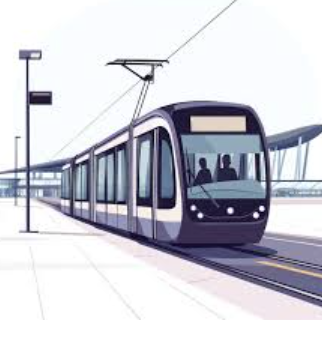By: Journalist Andrea Gooden (ORU)

Rep. Braden Billy Hamilton (OSU) introduced a bill on public transportation, OSU-519, Friday morning, receiving overwhelming support.
The one-star representative was thorough in the author’s explanations and questions. Among caucusing groups, a majority expressed a need for public transportation and indicated appreciation of the bill’s comprehensiveness and clarity.
Some unanswered questions remained: What benchmarks will cities and municipalities need to meet within the five-year compliance timeline?
Some representatives voted against the bill, citing concerns about the large allocation of funds and lack of opt-out options.
The bill passed with a vote of 51 affirmative to seven negation. The “Cowboy Commuter Act” (HB OSU-519) aims to transform Oklahoma’s public transportation infrastructure by developing and expanding local and statewide systems. Key provisions include:
Public transport expansion: Mandates cities with more than 35,000 residents to develop or expand public transportation, focusing on inclusivity for high-density, low-income and suburban areas. Includes ADA-compliant buses, vans, hybrid rail or commuter rail systems.
Intercity hybrid rail systems: Connects major urban centers like Oklahoma City and Tulsa with surrounding areas and proposes a statewide commuter rail network linking large cities to smaller municipalities.
Enhanced bus and van services: Optimizes urban routes, improves rural transit and prioritizes safety and environmental sustainability with low-emission vehicles.
Subsidized fare caps and accessibility: Caps fares are $2-$15 per trip, and a free statewide RFID public transportation card has been introduced.
The bill allocates 3% of Oklahoma’s annual budget to the program, encourages federal funding pursuits and penalizes non-compliant municipalities with reduced state subsidies.
Comparison with similar legislation:
- Oklahoma previously explored commuter rail in its state rail plan, but it lacked enforceable mandates or funding. The Cowboy Commuter Act introduces specific funding mechanisms, ADA requirements and a statewide governing body (OCRA).
- California’s high-speed rail targets environmental issues; the Cowboy Commuter Act focuses on cost-effective hybrid systems.
- Denver’s FasTracks used regional tax revenues; this act combines subsidies with municipal mandates, addressing both rural and urban needs.
- Texas’s Dallas-Houston high-speed rail targets a single corridor; this act takes a broader, multi-modal approach.
- The FAST Act supports state and local initiatives; this act aligns with federal goals by prioritizing intermodal connectivity.
Significance:
The Cowboy Commuter Act ambitiously combines state, local and federal efforts to create an interconnected, inclusive and sustainable public transportation system. Its framework sets it apart from prior Oklahoma initiatives while drawing on successful elements from other states.
